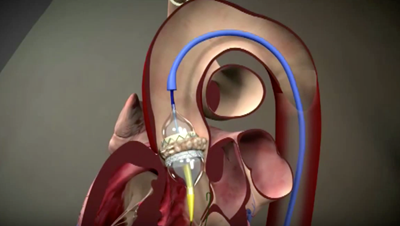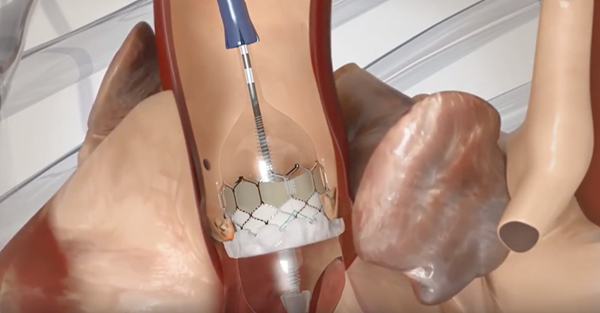In years past, people with severe aortic valve stenosis had few choices for treatment—but the TAVR procedure offers a new option that can literally bring new life to heart patients.
Severe aortic valve stenosis occurs when the aortic valve in the heart narrows, reducing blood flow from the heart to the rest of the body. As a result, the heart has to work harder, producing symptoms such as shortness of breath, chest pain and difficulty breathing when walking or lying down. Because the heart is working harder, that extra effort can weaken the heart muscle, leading to heart failure. To avoid this outcome, the valve must be repaired or replaced, and the traditional way to achieve this is through open heart surgery.
Open Heart Surgery Is Not an Option for Everyone
While open heart surgery can be highly effective, elderly or frail patients may find they are not good candidates for the procedure because it may put too much stress on their weakened bodies. With open heart surgery, the patient is anesthetized, an incision is made in the chest and the patient is connected to a heart-lung bypass machine to keep blood circulating in the body until the procedure is complete. Recovery from open heart surgery may take weeks or months, including time in the ICU and several days in the hospital. While younger patients may tolerate these stresses very well, the risks may not outweigh the benefits for older patients or for those whose health are more vulnerable.
TAVR Procedure Offers New Possibilities
 TAVR, which stands for transcatheter aortic valve replacement, provides another method for those who aren’t able to have an open heart procedure.
TAVR, which stands for transcatheter aortic valve replacement, provides another method for those who aren’t able to have an open heart procedure.
TAVR replaces the faulty valve, but instead of operating by going through the chest, TAVR uses a minimally invasive method in which the surgeon inserts a catheter containing the new valve into the femoral artery in the leg and travels through that artery, to the heart. This method is better tolerated by elderly or frail patients as it doesn’t require heavy anesthesia, a large chest incision, heart stoppage or a connection to a heart-lung bypass machine during the procedure. Recovery time is also reduced, so patients can be active sooner. Patients who undergo TAVR find they can breathe easier and can enjoy a longer and improved quality of life.
TAVR Procedure Being Used for Additional Patients
While TAVR was approved for use in inoperable and high risk patients, the FDA recently approved the procedure for intermediate risk patients with severe aortic stenosis as well, and is considering how this procedure might help an even wider population.
Orlando Health Develops TAVR Expertise
Orlando Health began offering TAVR in July 2012, and since the process was developed, both the technology and the techniques have continuously improved, creating a safer, smoother surgery with fewer complications. We have built our program from scratch, and with the expertise of our cardiac surgeons and cardiologists, have conducted 300 TAVR procedures, making the Orlando Health Heart Valve Center team your heart experts.
Are you interested in learning more about the Heart Valve Center at Orlando Health Heart & Vascular Institute?
Healing valve conditions and heart disease requires highly specialized care. Our team applies advanced knowledge, education, training and skill, from diagnosis through recovery, and our surgeons and interventional cardiologists have a combined experience of more than 10,000 valve procedures. These include the original clinical trials for transcatheter aortic valve replacement (TAVR) and Mitraclip – a less invasive treatment for mitral valve disease.
Learn More Here





